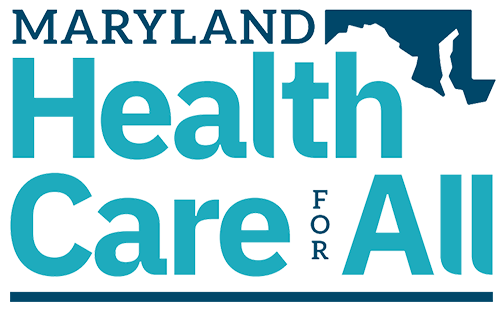December 9, 2018
Maryland legislators in the 2019 General Assembly session will consider several measures aimed at reducing health care costs and protecting the Affordable Care Act in Maryland, but it appears unlikely they will focus on a long-term plan to stabilize the state’s individual insurance market.
Lawmakers will consider a state-level individual mandate, ensuring health insurance for patients with pre-existing conditions, and will address the price of prescription drugs. They may also seek to guarantee long-term funding for the reinsurance program enacted last year.
But it seems likely that longer-term fixes to the individual market will not be considered until 2020, at the earliest. Some of the permanent solutions that have been circulated include merging the individual and small group markets, a Medicaid buy-in program and a universal health care option.
During the 2018 session, legislators passed a bill that allowed the state to pursue a waiver from the federal government and another bill that provided a funding mechanism for the program. Those bills, both of which became law, grew out of the Maryland Health Insurance Coverage Protection Commission and it appears likely the top proposals this session will also come out of that commission, whose recommendations are due by the end of the year.
A Maryland mandate?
The commission’s co-chairs, Sen. Brian Feldman, D-Montgomery, and Del. Joseline Peña-Melnyk, D-Prince George’s and Anne Arundel, will introduce legislation to institute a state-level individual mandate in Maryland, replacing the federal mandate that was effectively eliminated with last year’s tax bill.
A few other states, like Massachusetts and New Jersey, have their own mandates in place.
The individual mandate proposal would allow people without health insurance to use the penalty as a “down payment” on premiums instead. Supporters believe that tens of thousands of Maryland’s uninsured population could qualify for federal subsidies that would allow them to purchase insurance on the individual market with just the penalty or a minimal amount of money above the penalty.
“I prefer the down payment because the down payment actually gives people a choice,” Peña-Melnyk said. “I think at the end of the day, what I like about it, it will expand the pool of having younger people covered, not just the very sick. I think at the end of the day, that is a plus.”
The bill’s supporters believe the penalty would help bring prices down in the market, making insurance more affordable by adding more young and healthy people to the market’s pool.
But the mandate proposal is not universally popular. Opponents worry that putting a mandate in place in Maryland would penalize people who cannot afford health insurance but do not qualify for subsidies.
Del. Chris West, R-Baltimore County and a member of the health insurance commission, said he likes the idea of helping people with subsidies get insurance, but not the idea of forcing people to buy insurance if they do not want to.
“I’m not wild about the government telling people if you don’t do what we want you to do, we’re going to hit you with a penalty,” he said. West was elected to the Senate last month.
Among other issues with the proposal that West noted, there would be a lag in paying the penalty because it depends on tax returns from the previous year to find out who had health insurance and who did not.
Other groups, such as health insurers and the state hospital association, support the idea of a state mandate. But they also believe one would need to be in place carefully so as not to have unintended consequences.
Bob Atlas, president and CEO of the Maryland Hospital Association, sits on the health insurance commission. He called the down payment proposal “interesting.”
“The hospitals do support the concept of an individual mandate really in the sense of there being broad-based coverage,” he said. “The mandate that has been proposed is interesting in the way that they have designed it.”
Gov. Larry Hogan, a Republican, has said he would consider any proposal that crosses his desk, but he appears unlikely to support a mandate. In a statement last month, a Hogan spokeswoman said, “the governor generally favors incentives over penalties.”
Prescription drug prices
Prescription drug prices will once again return to the legislature’s agenda, as patient advocacy groups, insurance companies and health care providers align in opposition to rising prices, especially for on-patent drugs.
They all agree that drug prices have grown too high too fast. Pharmaceuticals account for one-third of CareFirst BlueCross BlueShield’s health care costs, said Brian Pieninck, the insurer’s president and CEO.
Consumer advocates believe slowing the rate of drug price increases would also help slow the rise of health insurance premiums.
One proposal carried over from last year would create a panel to review the costs of new drugs in Maryland. Peña-Melnyk and incoming Senate Majority Leader Kathy Klausmeier, D-Baltimore County, have signed on as sponsors of the legislation.
“Drugs don’t work if people can’t afford them,” Vincent DeMarco, president of the Maryland Citizens’ Health Initiative, which supports the bill, said. “This board would have the authority to make drugs more affordable for Marylanders.”
This board would review drugs priced at $30,000 a year or higher. It could then set its own rates and review the supply chain for these drugs.
Drug affordability will be a priority for the state’s doctors as well, said Gene Ransom, CEO of MedChi, the state’s medical society. He anticipates a number of solutions could be considered this year.
“I’m hopeful that we can figure something out,” he said. “A lot of these bills have technical issues that are very complicated. But the bottom line is (my members) want something done on this.”
But there is disagreement about what Maryland could do, or even if its actions would be constitutional.
A 2017 law passed by the General Assembly would have allowed the state attorney general to crack down on potential price gouging in generic drugs. But the 4th U.S. Circuit Court of Appeals found the law unconstitutional. There are similar concerns about any potential legislation this year.
“I was very much opposed (to last year’s drug review board legislation) because I thought it was unconstitutional,” West said. “The Constitution gives the Congress the right to control patents.”
He would like to see a commission, such as the Health Insurance Coverage Protection Commission, look at what Maryland could do on its own to bring down drug prices.
Pre-existing conditions
Maryland legislators could also look to codify into state law the same pre-existing condition protections that exist in the federal Affordable Care Act.
Those protections are currently at issue in a federal legal challenge in Texas that could overturn parts or all of the Affordable Care Act.
Maryland could enact protections for pre-existing conditions. Similar laws exist in Massachusetts and Virginia.
There is some concern that codifying the protections in state law would encourage people from out-of-state to move into Maryland just for health care coverage, weakening Maryland’s insurance pools.
Permanent reinsurance funding
Legislators may also look for a way to guarantee future funding of the state’s new reinsurance program. Last year, legislation was enacted to fund the reinsurance pool by assessing a 2.25 percent fee on health insurers that would have been assessed federally, but was set aside for 2019 in last year’s federal tax law.
That funding, along with federal pass-through dollars accessed through a waiver, could provide about $750 million for the reinsurance program, funding it through at least 2021.
The state may seek to assess that fee in any year the federal government does not, providing future funding to the reinsurance program, which this year was credited for significant rate decreases on the individual health insurance exchange.
Maryland’s largest health insurer, CareFirst, would support that move, Pieninck said. Republicans could support the move as well because it would be a continuation of a federal fee, not a new tax. West called the opportunity “golden.”
But the state’s other health insurers, especially those that do not participate in the individual market, could take issue with being forced to pay a fee they thought they were getting out from under.
Last modified: December 9, 2018


